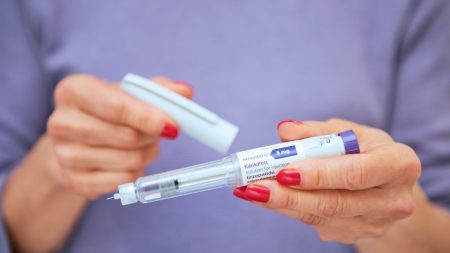The Pendle Borough community is grappling with a disturbing incident involving the alleged distribution of vapes laced with spice and ketamine to schoolchildren, resulting in the hospitalization of three students. Lancashire Police are actively investigating these reports, which originated from a social media post and have sparked widespread concern. The incident underscores the escalating dangers of illicit drug use among young people and the insidious methods employed to distribute such substances. Authorities are taking the matter seriously, recognizing the potential harm to vulnerable youth and the need to address the underlying factors contributing to this dangerous trend. Concurrent with the drug-related investigation, police are also addressing reports of criminal damage and malicious communication at a property in Colne, potentially connected to the alleged drug distribution. This multi-faceted investigation highlights the complex challenges faced by law enforcement in combatting drug-related crime and maintaining community safety.
The Pendle incident draws attention to a larger, national concern surrounding the growing prevalence of spice-laced vapes in schools. A recent House of Commons debate, initiated by MP Wera Hobhouse, highlighted the disturbing findings of a study by Professor Chris Pudney at the University of Bath. The study revealed that a significant percentage of confiscated vapes from schools contained spice, a synthetic cannabinoid often referred to as the “zombie drug” due to its debilitating effects. This alarming discovery prompted renewed calls for stricter regulations on the marketing and sale of vapes, with the Labour party pledging to revive the Tobacco and Vapes Bill to address this issue. The easy accessibility of vapes, coupled with the potential for them to be laced with dangerous substances, poses a significant threat to the health and well-being of young people.
The incident in Pendle is not an isolated case. Reports of young people, some as young as twelve, being hospitalized after using spice-laced vapes are emerging across the UK. Last year, five teenagers in London were rushed to hospital after vaping a substance containing spice, with one requiring an induced coma. These cases highlight the severe health risks associated with spice, including reduced consciousness, vomiting, confusion, and more severe consequences such as seizures, temporary paralysis, and even kidney injuries. The drug’s addictive nature and potential for long-term psychological harm further compound the risks, making it a serious public health concern.
The increasing prevalence of spice in schools and communities across the UK has raised alarm bells amongst law enforcement and public health officials. Spice, a synthetic cannabinoid designed to mimic the effects of cannabis, often has far more unpredictable and dangerous consequences. The drug’s potency varies greatly from batch to batch, making it difficult for users to gauge the potential effects. This inconsistency, combined with the often unknown composition of street-bought spice, contributes significantly to the risk of overdose and other adverse health outcomes.
The rise of spice use has been particularly evident in some of the most vulnerable communities in Britain. The drug’s low cost and accessibility make it appealing to individuals struggling with addiction and poverty, leading to scenes of near-unconscious users in some areas. This has prompted increased efforts by law enforcement to address the supply and distribution of spice, but the constantly evolving nature of synthetic drugs presents a significant challenge. The ease with which new variations of spice can be manufactured and distributed online makes it difficult for authorities to keep pace.
Public Health Wales has also reported an increase in the detection of synthetic cannabinoid receptor agonists (SCRAs), the official term for spice, in e-liquids. Many users are unaware that the vapes they purchase online or from unregulated sources contain these dangerous substances, believing they are buying cannabis or CBD oil. This underscores the importance of public awareness campaigns to educate individuals about the risks associated with unregulated vape products and the potential for contamination with harmful substances. The need for stricter regulations and greater oversight of the vape market is increasingly apparent to prevent the continued spread of spice and other dangerous drugs disguised as harmless vaping products.
The historical context of spice adds another layer of complexity to the issue. Originally synthesized in 2006 by organic chemist John Huffmann during research on anti-inflammatory medication, the substance was never intended for human consumption. However, it quickly found its way onto the market, often marketed as incense or plant fertilizer. Despite being banned as a psychoactive substance in 2016, spice continues to be widely available, highlighting the challenges in regulating synthetic drugs. The continuously evolving chemical formulas used to create new variations of spice make it difficult for law enforcement and regulatory bodies to stay ahead of the problem. The Pendle incident serves as a stark reminder of the dangers posed by this readily accessible and highly potent drug, and the urgent need for continued efforts to address its prevalence and protect vulnerable populations, particularly young people.











